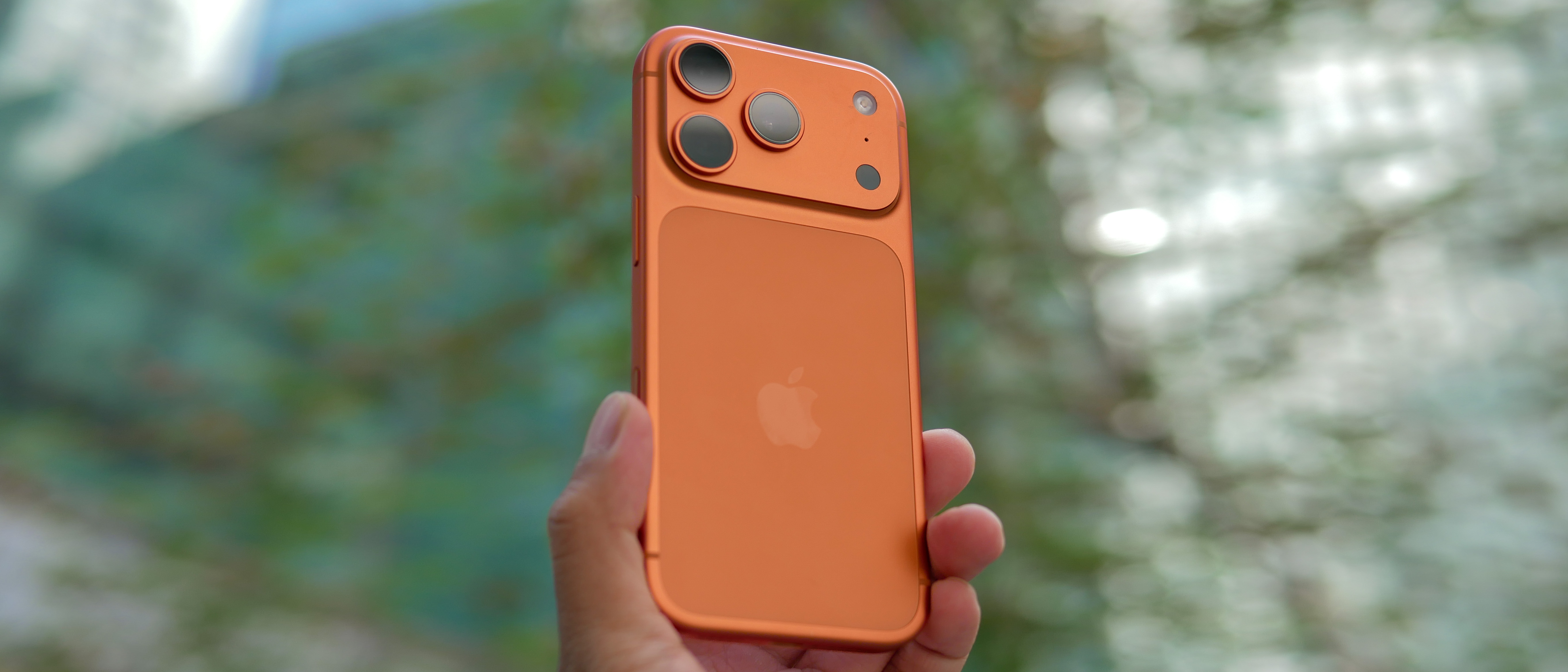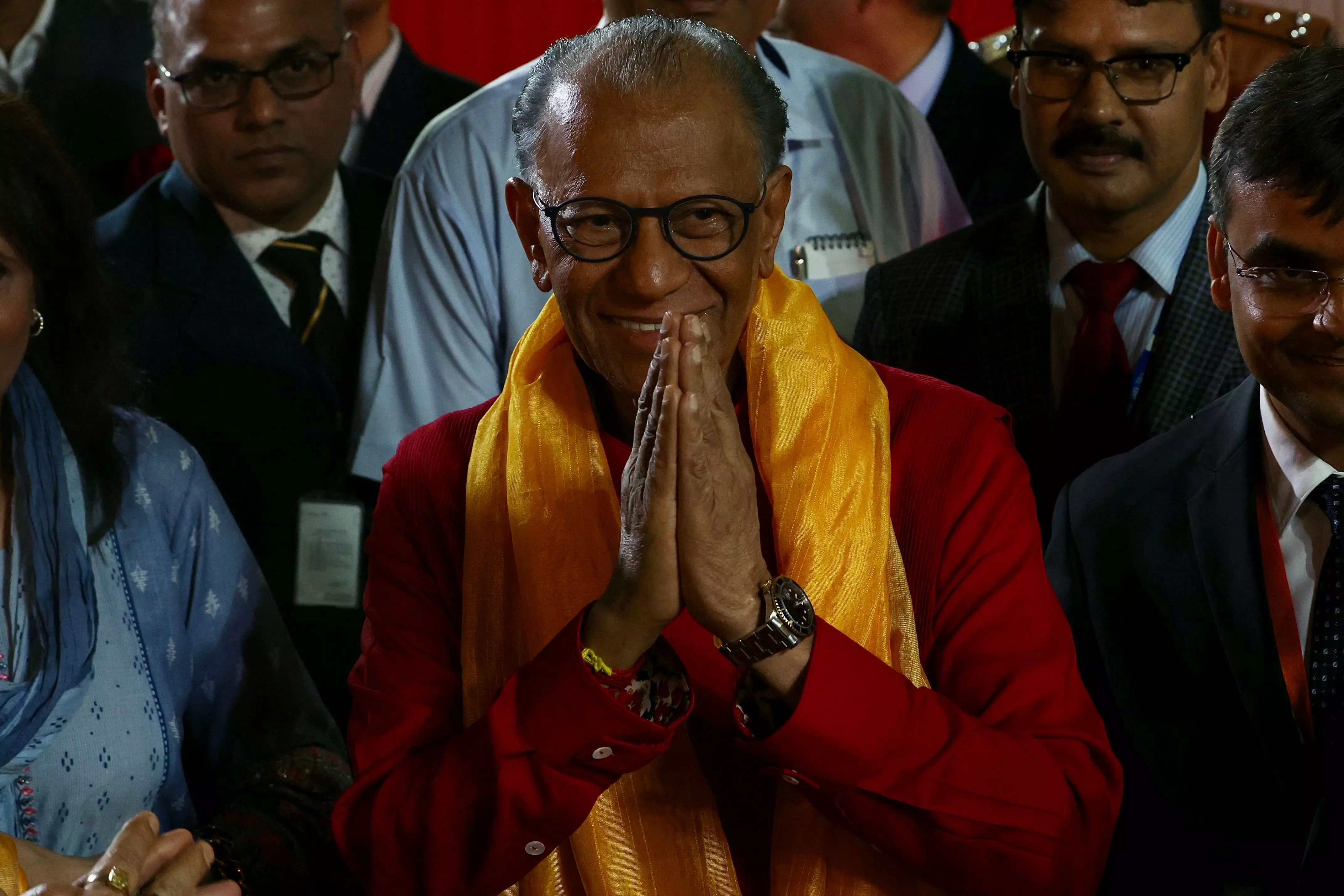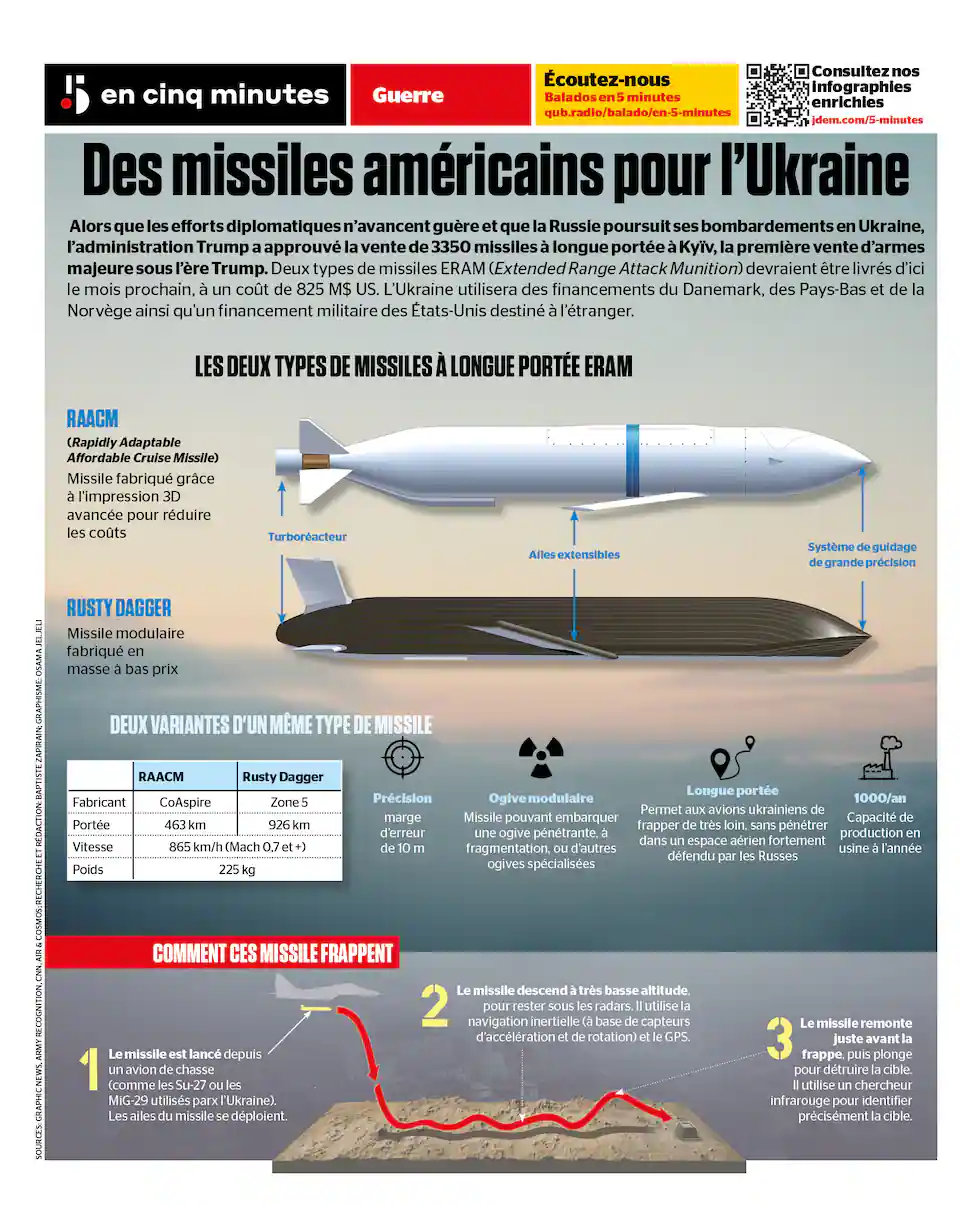
For the last two generations, the only difference between the Pro and Pro Max were their sizes — with the Max offering a larger battery that subsequently got a longer battery life. With this year’s iPhone 17 Pro, it’s a bit more complicated.
Despite having the same triple cameras as the iPhone 17 Pro Max and new redesign, there’s now a price hike that puts it at $1,099. Meaning, there’s a $100 price difference separating the two best phone contenders. That’s a much narrower gap given the $200 difference we’ve been seeing for the past few generations.
Still, there’s a lot I’m excited about with the iPhone 17 Pro, like its upgraded 48MP telephoto camera, 18MP Center Stage front camera, vapor cooling chamber, A19 Pro chip, and more. It’s not just trying to beat the iPhone 17 Pro Max on value, but it’s also competing against the iPhone Air — along with many of the best Android phones in this price range.
The smaller top-of-the-line flagship model has a lot to prove, but I’ll tell you how it does it in my iPhone 17 Pro review. Not only that, I’ll also show how it performs in the zoom department with its shiny new telephoto shooter, and when combined with all the other new video-centric features, it means the phone gets to be a solid best camera phone contender.
Apple iPhone 17 Pro review: Specifications
Apple iPhone 17 Pro review: Price and Release
I certainly didn’t want to see any price hikes, but the iPhone 17 Pro is the only one in the lineup to get one. You’ll now have to fork over $1,099 to buy it, which makes it $100 less than the iPhone 17 Pro Max. In previous years, the difference was $200, but there’s a caveat with this increase.
Instead of 128GB being the base storage option, the iPhone 17 Pro now gets 256GB. That’s wonderful and sort of justifies the price increase. However, I wish Apple gave it that storage for the same $999 cost as before. I’m only pointing this out because the base iPhone 17 also gets upgraded to 256GB, but retains the same $799 price tag.
As much as the increase in price is a point of contention, you might not end up having to pay that full amount with some of the best iPhone 17 Pro deals around. While iPhone 17 Pro preorders are still ongoing, full general availability starts on September 19.
Apple iPhone 17 Pro review: Design
I’m in love with the new redesign, it’s exactly what was needed to evolve the Pro’s design language. The first thing I notice is the two-toned design of the iPhone 17 Pro, which really stands out with the new Orange color. At the right angle, the deeper orange shade of the aluminum frame contrasts nicely with the lighter shade of the back casing.
While I’m sad that Apple ditches titanium, the aerospace-grade 7000-series aluminum alloy it uses with the iPhone 17 Pro doesn’t appear to compromise its construction. It feels incredibly solid, which is complemented by Ceramic Shield 2 covers for the front and back of the phone.
Another change worth pointing out is the camera housing, which now stretches across the entire top half of the phone. It’s raised from the rest of the body, but it does add a bit of symmetry to the design. There are other minor changes, too, like how the frame is ever so contoured compared to the flat edged design of previous phones — making it more comfortable to hold in the hand.
Even though the color options have dwindled to three this year, I will say that Cosmic Orange is without a doubt the show stealer in the bunch. I’ve taken it in public on a few occasions already and people really take notice of it.
Apple iPhone 17 Pro review: Display
On paper, the iPhone 17 Pro still has a 6.3-inch Super Retina XDR display with the same 2,622 x 1,206 resolution as last year’s model. It’s detailed and perfectly captures web pages in all of their glory, while the OLED panel produces iridescent colors and wide viewing angles that make watching videos a treat on it.
Along with the Ceramic Shield 2, it has improved anti-reflective properties that help with glare. I loaded the new Super Mario Galaxy teaser trailer on both the iPhone 17 Pro and 16 Pro, and noticed how there are fewer reflections on the new phone.
If that’s not enough, the iPhone 17 Pro’s display is bright for outdoor visibility. The 1,555-nit peak brightness technically beats the iPhone 16 Pro, but it’s not by much. Against its rivals, like the Galaxy S25 Ultra and Pixel 10 Pro, both phones have brighter screens.
Despite this, the iPhone 17 Pro is still suitable for the outdoors because of its anti-reflective properties. And since it has ProMotion technology with adaptive refresh rates up to 120Hz, the screen still looks buttery smooth whether I’m playing games, scrolling through emails, and watching video.
Apple iPhone 17 Pro review: Cameras
The latest model naturally gets the best cameras ever on an iPhone, so that’s a triple 48MP camera system for the iPhone 17 Pro. On paper, the 48MP main and ultrawide camera appears to be similar to the iPhone 16 Pro, but the telephoto is where you get the biggest upgrade. It’s now a 48MP telephoto with 4x optical zoom which, through a combination of sensor cropping and newer image processing algorithms, achieves 8x optical-quality zoom captured at 12-megapixels.
It’s worth remembering that the iPhone 16 Pro offers a 12MP telephoto with 5x optical zoom. This is the classic trade-off between sensor resolution and optical magnification, something I’ve seen countless times in other phones — like how Galaxy S23 Ultra offered a 10MP telephoto with 10x optical zoom, which then turned out to be a 50MP telephoto with 5x optical zoom.
Other new camera features with the iPhone 17 Pro include an upgraded 18MP Center Stage selfie camera that uses a square sensor. Not only does it offer a much wider field of view, but now it can adapt to how you hold the phone. Meaning, no matter if it’s held in portrait or landscape, you have access to the same framing options.
I can’t deny that the iPhone 17 Pro’s 48MP main camera is a confident shooter, especially under daytime settings where it delivers the best results. Against the Pixel 10 Pro XL, which has the same camera as the Pixel 10 Pro, I prefer the stronger contrast that the iPhone 17 Pro offers — along with its richer colors. Detail capture is actually quite good with both phones, but the iPhone 17 Pro cleans up and sharpens more of the fine details.
It’s also another solid effort for the iPhone 17 Pro and its 48MP ultrawide camera, which features a 120-degree field of view. Although the Pixel 10 Pro XL has a slightly wider 123-degree field of view, the iPhone produces the brighter image and with better exposure in the shadows. You can see how it draws out more of those details in the trees.
With its brand new 18MP Center Stage camera, the iPhone 17 Pro is more versatile at shooting selfies. That’s because thanks to its square sensor, it can automatically adjust the framing to fit everyone in your group shot. Plus, you get access to all four of its framing options regardless of how you hold the phone — and that’s the kind of convenience I like to have.
Right away, it’s instantly clear how much of a difference it makes with the two shots above. Not only does it have a wider capture than the iPhone 16 Pro/Pro Max selfie camera, but it does a much better job of exposing my face. And if you zoom into my face and shirt, you can see it captures the same level of detail.
To test out its dynamic range performance, I shot the photo of the building above with its inside brightly lit to see how it handles against the darker setting outside. The Galaxy S25 Ultra does the better job of retaining the highlights so they don’t look overblown, but the iPhone 17 Pro does that to almost the same degree while boosting the shadows. As a result, there’s a much more even exposure across the scene.
I can get really close to a subject to snap a macro shot. One thing I instantly notice about the iPhone 17 Pro without inspecting the fine details is that it has a slightly lower contrast look — the iPhone 16 Pro Max’s macro shot offers better contrast.
Looking at the shelves of the different colored peppers I shot inside the produce section in Whole Foods, I prefer the brilliant looking colors of the iPhone 17 Pro. The green peppers in particular have an attractive sheen to them, while the red peppers aren’t blood red like what they are with the Pixel 10 Pro XL’s shot.
Finally, I need to talk about the iPhone 17 Pro’s upgraded 48MP telephoto camera with 4x optical zoom. At 4x zoom, it’s unsurprisingly better because the iPhone 16 Pro Max relies on sensor cropping with its main camera to achieve 4x zoom. That’s why the details of the tree and its branches are much sharper with more definition above.
Now at 8x zoom with the same shot of the tree, this is where it gets interesting because it’s now the iPhone 17 Pro that’s using a bit of sensor cropping — whereas the iPhone 16 Pro Max isn’t doing as much of it because of its native 5x optical zoom.
However, this is the classic story between optical zoom and a high resolution camera. At first glance, looking at the entire picture, the iPhone 16 Pro Max looks sharper across the board, but zooming in reveals that detail capture is nearly identical.
For my last zoom test, I placed them both at 25x zoom because that’s the farthest that the iPhone 16 Pro Max gets — whereas the iPhone 17 Pro gets to 40x. The only apparent thing I notice is the stronger contrast of the tree’s bark with the iPhone 16 Pro Max. Apart from that, they capture about the same level of detail
I also want to show you how AI is helping phones like the Pixel 10 Pro XL achieve new heights when it comes to zooming. I placed both phones at 40x zoom to capture the Chrysler Building from Bryant Park, and with the help of its Pro Res Zoom feature, the Pixel 10 Pro XL adds more definition to the structure and sharpens up the shot as well.
Apple once again proves its phones are the master of low light. The iPhone 17 Pro shot doesn’t just look brighter with the tree in my backyard, but it’s also sharper with better definition than the Galaxy S25 Ultra.
One thing’s for sure, the iPhone 17 Pro’s new 18MP Center Stage camera is a big boost. It’s the biggest difference I see over the iPhone 16 Pro/16 Pro Max. And while the main and ultrawide camera behave just like they did before, I’m not yet convinced that the new telephoto camera is better. Yes, at 4x zoom there’s no denying it’s sharper with more definition, but beyond that, I don’t see an overwhelming performance gain over last year’s telephoto shooter.
Apple iPhone 17 Pro review: Video Recording
Again, the iPhone 17 Pro and 17 Pro Max have the same identical cameras, including new video-centric features like the addition of ProRes RAW, Log 2, and genlock support. There’s also the new Dual Capture mode, which is the latest addition to its arsenal.
Although, it’s technically not new because Apple released an API alongside iOS 13 that brought multi-capture to record with two cameras simultaneously. However, it was only available through third party apps — whereas Dual Capture is available by default. I shot the clip above showing it off.
It works well for the most part, but there’s a bit of jitter when I switch zoom levels. Additionally, I wish Apple could give users more framing options because it’s locked into one of the main cameras with only a small window for the selfie shot.
There are plenty of shooting resolutions to choose from with the iPhone 17 Pro, including a native 4K 120fps option that I still don’t see in many other phones. Against the Pixel 10 Pro XL, the iPhone 17 Pro does a better job of neutralizing the highlights because the Pixel 10 XL can sometimes overexpose them.
The clips above show how the iPhone 17 Pro and Pixel 10 Pro XL compare to one another when shooting at 4K 30fps.
Apple iPhone 17 Pro review: Performance
Under the hood is Apple’s most powerful mobile chipset to date, the A19 Pro chip. It consists of a 6-core CPU and 6-core GPU, accompanied by Neural Accelerators built into each core that offer improved AI performance.
Right away, benchmark scores indicate it’s a beast, especially against the Snapdragon 8 Elite. In GeekBench 6, its respective single and multi-core scores of 3,834 and 9,988 not only beat the Galaxy S25 Ultra, but they’re significant gains over the iPhone 16 Pro. The phone feels fast, so running apps and other basic operations are handled smoothly.
Over on the GPU performance side of things, the iPhone 17 Pro shows its muscle power reaching an average frame rate of 158.37 fps with 3DMark WildLife Unlimited test. That’s a significant improvement over the iPhone 16 Pro’s 109.33 fps average, but just a smidge behind the Galaxy S25 Ultra’s 161.66 fps average.
I loaded Diablo Immortal on my iPhone 17 Pro and the ray tracing effects look amazing, even when there’s heavy action going on it keeps a smooth frame rate.
After 20 minutes of continuous gameplay, the phone remained pretty cool — which is due to the new vapor chamber system that better dissipates heat buildup. The only time it felt somewhat toasty was during an afternoon’s worth of shooting 4K video.
Apple iPhone 17 Pro review: Battery Life and Charging
For many parts of the world, the iPhone 17 Pro is only being offered as an eSIM-only option, which Apple says has a larger battery due to the extra space that would normally be occupied by a physical SIM slot.
This results in a longer battery life for the iPhone 17 Pro according to our battery drain test, reaching a time of 14 hours and 50 minutes. That’s an improvement over the iPhone 16 Pro’s average run of 14 hours and 7 minutes.
I’m also seeing solid all-day battery life with my real world use. Most of my time on the phone has been spent surfing the web, taking tons of photos with all its cameras, watching videos on YouTube, and getting in a few sessions with Diablo Immortal and Age of Origins throughout my day. I’ve made a point to not top off its battery during the day, only to find it at about 20% battery life by the end of the night.
Speaking of charging, the iPhone 17 Pro along with the rest of the new phone get upgraded to faster 35W wired charging speed and support for 25W Qi 2.2 charging. Using Apple’s new 45W USB-C charger, the iPhone 17 Pro gets to 40% in 15 minutes — and subsequently to 72% in 30 minutes.
Apple iPhone 17 Pro review: Software and Apple Intelligence
Launching alongside the release of the iPhone 17 Pro is iOS 26, Apple’s redesigned mobile software. This year’s software receives its biggest makeover in years, thanks in part to its new Liquid Glass material design language. However, it doesn’t have as nearly forward-facing features as past software updates.
I won’t go into detail about the pros and cons of it here, seeing that our iOS 26 review covers them in great detail. Instead, I’ll point out what stands out with iOS 26 running on the iPhone 17 Pro.
Liquid Glass: A new transparent design language really changes up the way iOS looks, as the transparency of different elements in the interface give it a slicker looking polish than Android 16.
More lock screen customization: Apple’s updated customizations with the lock screen make it more personalized than ever before, complete with a dynamic clock that will stretch out based on the photo — plus the option to give the wallpaper a 3D-like effect with spatial scenes.
Call Screening: One of my favorite new iOS 26 features is Call Screening because it takes the hassle of dealing with spam calls. Call Screening will determine if a caller is legit or not, which will then show you the transcription of their message — and you’ll have the option to accept or not.
Hold Assist: Rather than waiting on hold, the iPhone 17 Pro can do it for you with iOS 26’s new Hold Assist feature. It’ll monitor the call and then notify me when someone is there ready to speak to me.
Live Translation: Apple’s stab at Live Translation works really well to translate languages. It works with phone calls and FaceTime, but what I really like about the implementation is that it does the translation in real time soon after the person speaks. I’ve tested it out again Samsung’s version with Galaxy AI, and Apple does a better job.
CarPlay with iOS 26: Finally, the CarPlay experience with iOS 26 gets its own makeover in the form of more home screen customization. You now have access to a bunch of widgets to use with the home screen, including many clock options.
I won’t deny the appeal of iOS 26, thanks in part to its Liquid Glass design, but I was hoping to get new Apple Intelligence features with the release of the iPhone 17 Pro. Unfortunately, the only new stuff regarding Apple Intelligence is how the Shortcuts app gains AI-powered automations, along with an updated Visual Intelligence that now integrates with screenshots.
Given how a lot of the Pixel 10 Pro’s value comes from new Google AI features, I’m really puzzled by Apple’s choice to not introduce anything new. Apple Intelligence was already behind its rivals, and with the release of the Pixel 10 Pro not long ago, that gap has widened even more. Hopefully I’m wrong and Apple does end up bringing new Apple Intelligence features before the end of the year.
Regardless of that, buying the iPhone 17 Pro almost guarantees it’ll get the latest software for a long time. Apple didn’t explicitly say how long it’ll support it, but five to seven years is a good guess when you look at past phones.
Apple iPhone 17 Pro review: Verdict
I’m really torn this year mainly because of the price increase given to the iPhone 17 Pro. Yes, I’m in love with the new redesign, how much more flexible it is shooting selfies with its Center Stage camera, the strong performance out of its A19 Pro chip, and how it gets double the storage capacity.
If you’re asking me which one I’d recommend between the iPhone 17 Pro and 17 Pro Max, my answer would be for the latter because of the larger display and longer battery life. For the $100 difference, it’s worth the money — whereas in the past, it would’ve been normally a $200 spread between them. You should get the iPhone 17 Pro if you simply prefer a smaller phone without compromising on the camera performance.
On the other hand, it certainly has tough competition with phones like the Pixel 10 Pro. That phone is $100 less than the iPhone 17 Pro, and despite having only 128GB of starting storage, its slew of AI features and AI-enhancing telephoto camera make it a compelling package.
Follow Tom’s Guide on Google News to get our up-to-date news, how-tos, and reviews in your feeds. Make sure to click the Follow button.
More from Tom’s Guide



